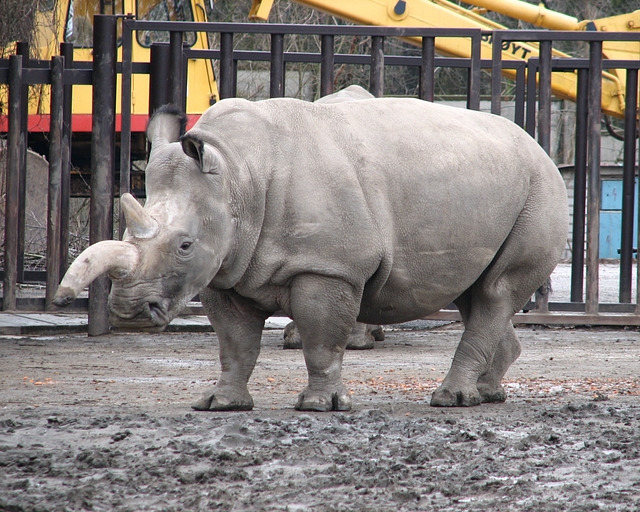
How Science Can Bring Back The Northern White Rhino
There is definitively a decent chance of reviving the northern rhino species by using one of many DNA related bio-technologies, The Verge has reported. The death of Sudan, the last male northern rhino, had caused quite a flutter among wild life enthusiasts and conservationists. It has now emerged that within thirty minutes of the last male northern rhino's death scientists got to work and had collected DNA samples from the ears, gums, spleen, windpipes and testicles of the rhino.
The exact modus operandi of how the species can be revived, it at all such a project will be attempted, are yet to be worked out. However, scientists seem to be hopeful as plenty of genetic material collected from the species is available. Technically, the northern rhino is yet to be fully extinct as two female northern rhinos are still alive at a wildlife park.
According to The Verge, one available option to revive the species is to attempt fertilizing a rhino egg with frozen sperm in a petri-dish. However, while this technique has worked in humans and livestock it has never been tried on rhino cells. Further, there are no rhino eggs banked and readily available – except perhaps what can be extracted from the two female northern rhinos that are available. Such an extraction, according to the report, may not be straightforward and has potential to cause harm to the females.
The other option being discussed is to make rhino eggs and sperm in the laboratory. This can be possible by using pluripotent stem cells which can be turned into sperms and eggs. This method has been employed to create live mice in Japan. The pluripotent stem cells for the northern white rhino has already been extracted.
In whatever way the embryo is created the plan is to implant them in the wombs of female southern white rhinos. Since the two species – the northern white and the southern white – are genetically very similar the embryo should have a decent chance of survival and gestation.
While the science part of bringing back the nearly extinct rhinos seems doable what may make the project very complex and difficult is answering the question about what to do when we are able to breed a significant number of the species. Releasing into the wild without adequate habitat or protection may be troublesome. Being able to 'create' and populate herds like they were once in the wild would be another challenge.
You can read the full report on efforts to bring back northern white rhinos on The Verge here.